In figure shown if mA=20 kg and mB=80 kg. The acceleration of block A if the system is set free to move is βm/s2 . Find the value of β . (Take g=10ms−2)

The correct Answer is:A, B, D
Let x1,x2 and x3 be the displacement of the three bodies as shown, measured downwards from the ceiling:
Also, let us assume acceleration of each body in the downward direction.
(a1,a2,a3)
From newton 's law
(1) 20g−4T=20a1 (2) 80g−2T=80a2
From constraint equation
x1+x1−x2 = constant ⇒2a1−a2=0
2x2+2x3 = constant ⇒a2+a3=0
combining the equation to get (3) a3=−2a1
Solve to get a1=−7g17 and a2=14g17
Acceleraion of 20 kg, 7g17m/s2 upwards acceleration of 80 kg, 14g17m/s2 downwards
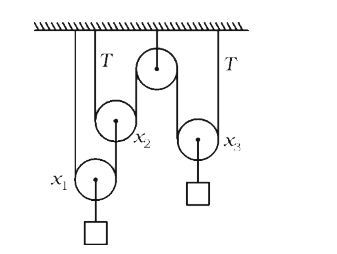
Similar Questions
Knowledge Check
- Question 1 - Select One
If m1=10kg,m2=4kg,m3=2kg, the acceleration of system is
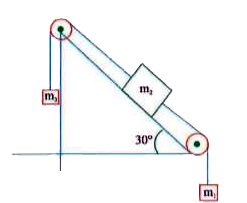 A5g/2B5g/3C5g/8D5g/14
A5g/2B5g/3C5g/8D5g/14 - Question 2 - Select One
If m1=10kg,m2=4kg,m3=2kg, the acceleration of system is
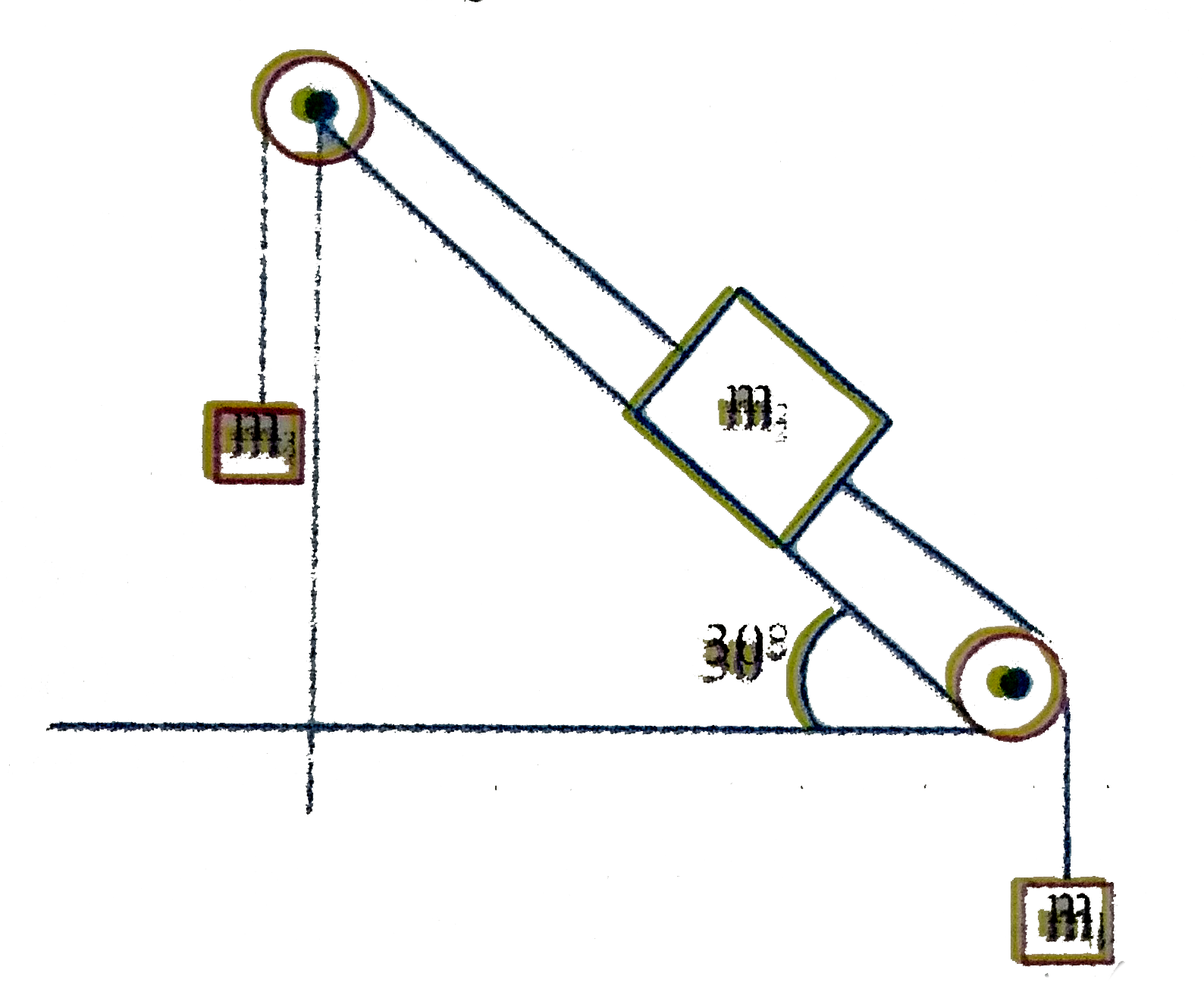 .A5g/2B5g/3C5g/8D5g/14
.A5g/2B5g/3C5g/8D5g/14
In the figure (g=10m/s2 ) .Acceleration of 2kg block is :
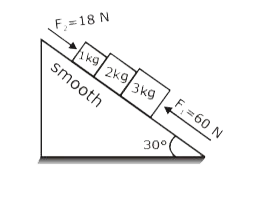 View Solution
View SolutionFind the work done of move an object of mass 3 kg to a height of 20 m from the ground (Take g =10ms−2).
View SolutionIn the figure-2.205 shown in blocks A, B and C has masses mA=5kg,mB=5kg and mC=10kg respectively, find the acceleration of the three blocks. Assume all pulleys and strings are ideal. (Take g=10m/s2)
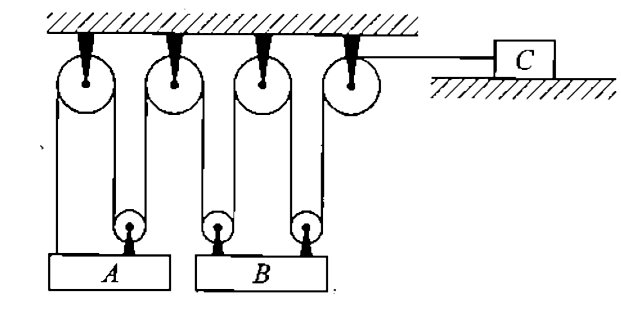 View Solution
View SolutionIn the arrangement shown in figure mA = 4.0 kg and mB = 1.0 kg. The system is released from rest and block B is found to have a speed 0.3 m/s after it has descended through a distance of 1m. Find the coefficient of friction between the block and the table. Neglect friction elsewhere.
(Take g = 10 m/s2)
 View Solution
View SolutionIn the system shown in the adjoining figure, the acceleration of the 1 kg mass is m/s2. (take g=10m/s2)
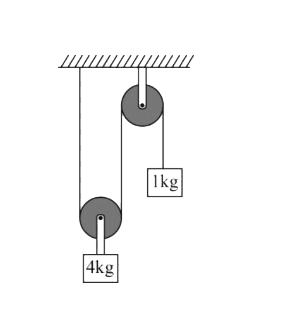 View Solution
View SolutionFind the acceleration of the two blocks . The system is initialy at rest and the friction are as shown in fig .Given mA=mB=10kg
 View Solution
View Solution



